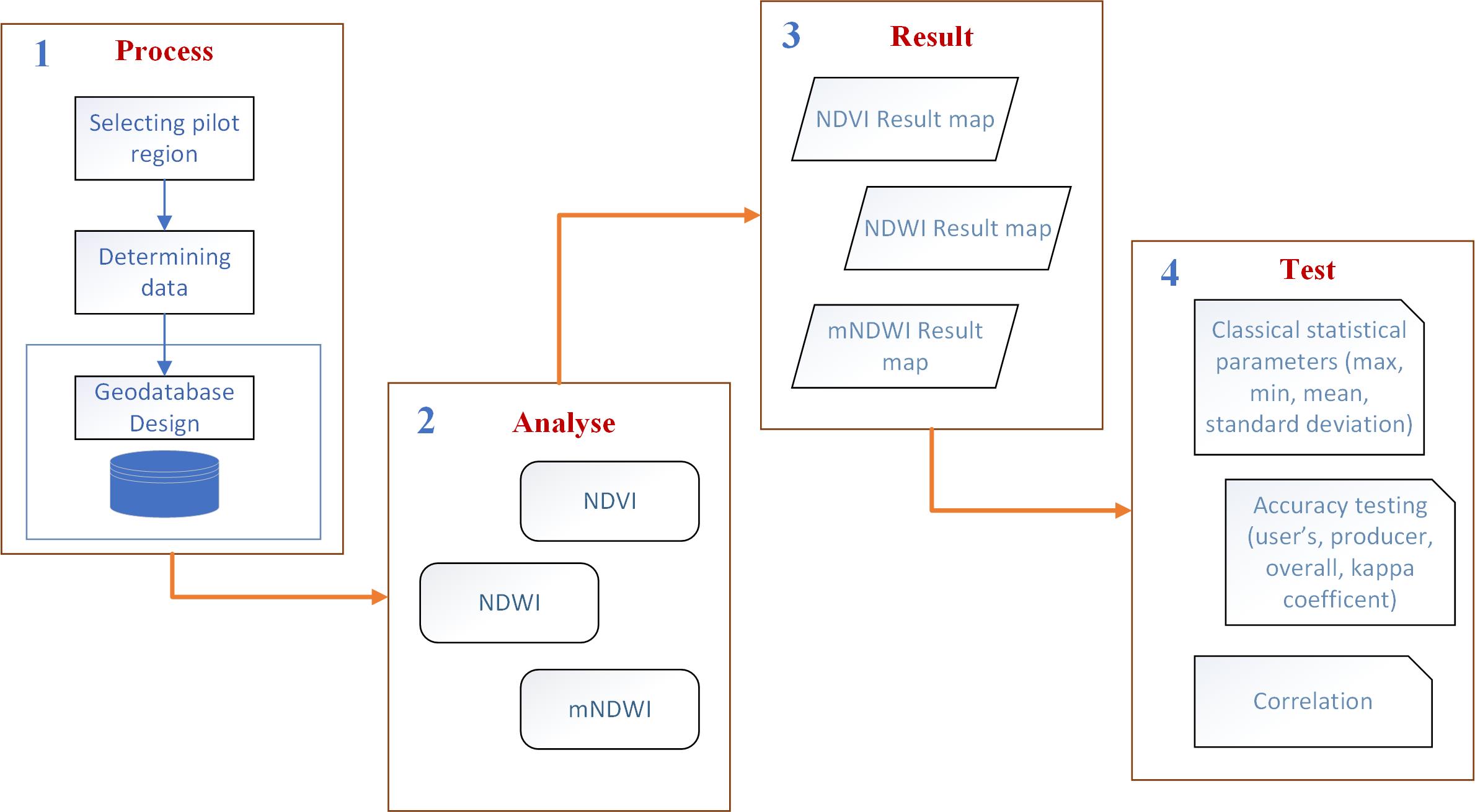
Ramsar sites are important ecosystems that are protected by international status, have great value in terms of biodiversity, and constitute a resource in terms of economic, cultural, scientific and recreational aspects. In this study, the change of Lake Uluabat Ramsar Site and its surroundings, between the years 1985-2021 has been observed. For this, Remote Sensing (RS) and Geographic Information Systems (GIS) methods were used. Vegetation change in the lake and its surroundings in 1985, 2000, 2015 and 2021 with Normalized Difference Vegetation Index (NDVI), and changes in water surfaces with the water indices Normalized Difference Water Index (NDWI) and Modified Normalized Difference Water Index (mNDWI) were analyzed by using Landsat multi-band satellite images (Landsat 5 TM, Landsat 7 ETM and Landsat 8 OLI/TIRS) as RS data. The resulting changes were monitored and the success of the indices in determining these areas and the relations of the indices with each other were questioned by Accuracy index, Kappa coefficent, and Correlation analyses. The results show 36-year long-term changes and reveal a 13.06% shrinkage of Uluabat Lake wetland and surrounding water areas with the highest kappa coefficients for mNDWI as 0.83, 0.90, 0.93, 0.97, respectively, over the years studied.
Total file downloads: 10